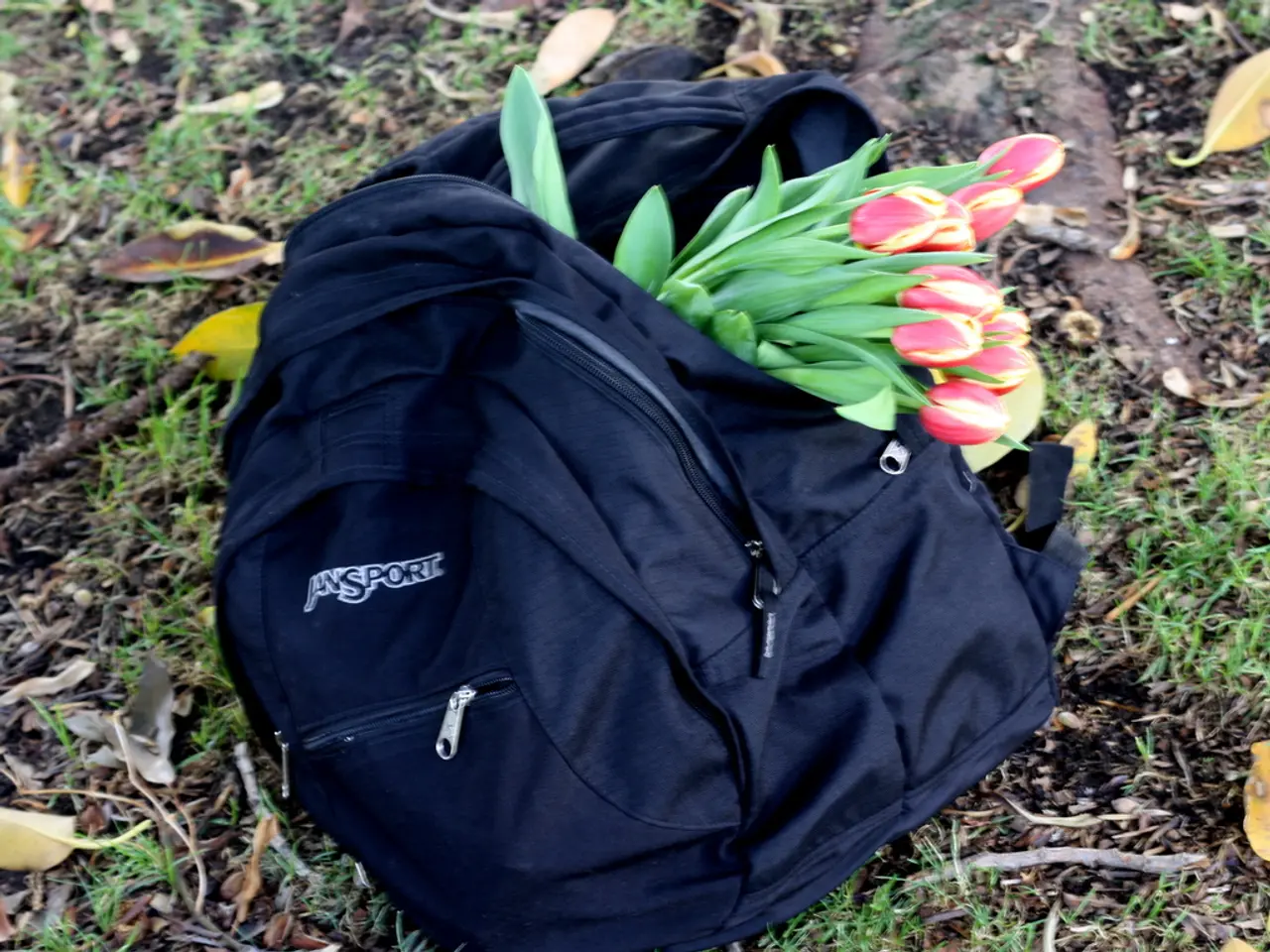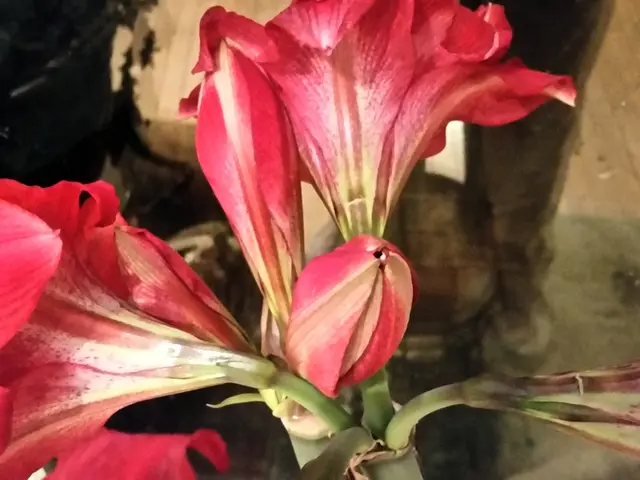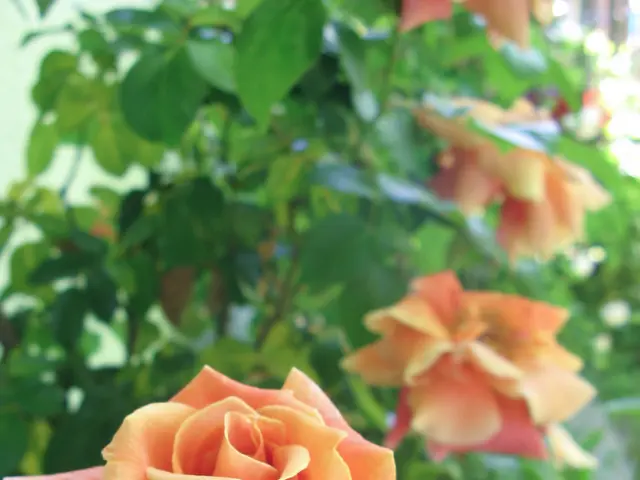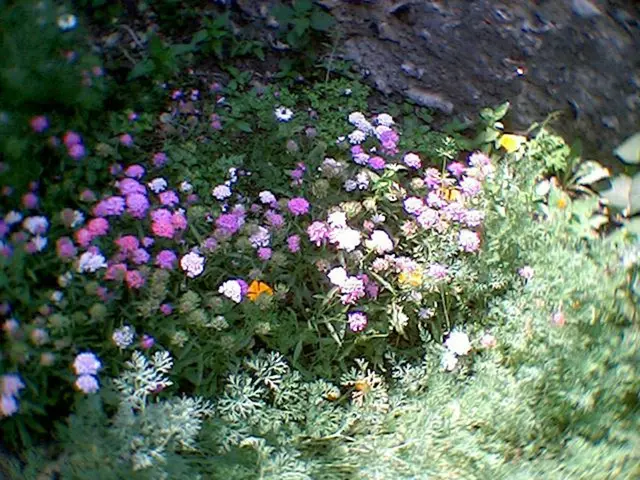Unconventional methods to leverage autumn debris in your garden this season:
Leaves Ain't Just trash in the Garden
When autumn rolls around and trees drop their leaves, it might seem like nothing more than a yard chore. But, these fallen leaves can transform into powerful tools, turning your garden into an eco-friendly paradise. With a dash of elbow grease, you can turn leaves into mulch, compost, insulation, and even garden art. Here's the lowdown on how to get the most out of every leaf that falls.
1. Goin' Leafy on the Mold
Pile up damp leaves in a shady spot and let 'em rot for a few months. Voila! You've got yourself some leaf mold. This dark treasure looks like compost but is purely leaf-based. Add it to your soil to retain moisture and improve texture, while boosting root health. Easy peasy, eco-friendly.
2. Mulching, Baby!
Spread dried leaves around your flower beds. Instant natural mulch! It keeps moisture in, prevents weeds, and feeds your plants as they break down. A 2-3-inch layer is your sweet spot for best results.
3. Insulate the Plants
During cold snaps, pile dry leaves around sensitive plants like tulips or strawberries. The leaves trap heat and keep the soil warm. When things warm up, make sure to remove them so your plants can grow freely.
4. Let's Get Lasagna Gardening
Layer leaves, cardboard, grass clippings, and kitchen scraps for an easy, no-dig garden. The layers break down over time into a fertile bed. You can plant straight into it in a few weeks. It's perfect for building a garden from scratch.
5. Compost Party
Add leaves to your compost pile to balance the greens. They add fiber that speeds up the composting process. Shredded leaves break down faster, but whole leaves do the job too. A good compost mix is one part green to two parts brown.
6. Soil Protector
Leave a layer of leaves over empty garden beds and walkways to prevent soil erosion and keep weeds at bay. Remove or turn them under when it's time to plant.
7. Filling Raised Beds
Make a base layer of leaves in your raised bed before adding topsoil. The leaves improve drainage, reduce the amount of soil you need to buy, and break down over time to become part of the bed.
8. Leaf Tea, Anyone?
Soak leaves in water for a few days to make leaf tea. Pour it around your garden to give your plants a nutrient boost. It's a gentle fertilizer that works for flowers, veggies, and herbs.
9. Wildlife Oasis
Pile up leaves to provide a cozy home for helpful animals like insects, birds, and frogs. Leave them be to let nature run its course.
10. Soft Garden Paths
Create a natural, leafy path between your garden rows or in walkways. As they break down, they add nutrients to the soil and feel great underfoot. Refresh the layer every few weeks to keep things tidy.
11. Insulate those Cold Frames
Pile leaves on top of your cold frames during frosty nights. They provide an extra layer of insulation to keep warmth in and extend your growing season.
12. Hugelkultur Baby
Incorporate leaves between layers of logs and branches in a hugelkultur bed. The leaves break down, add nutrients, and help retain moisture in your soil.
13. Potting Mix Elevation
Add shredded, dried leaves to homemade potting mix. They improve drainage and add texture that plants love.
14. Leafy Trenches
Dig shallow trenches between your garden rows and fill 'em with leaves. The leaves act like slow-release compost and improve soil quality over time.
15. Boost Soil Life
Spread leaves over garden beds to attract worms and microbes, who love to munch on leaves. Healthy soil equals strong plants.
16. GrassBlocker
Cover the grass with cardboard and leaves to smother weeds before you plant new garden beds. No digging required!
17. Sheet Mulching
Layer leaves, compost, straw, and cardboard in a garden bed. Over time, these layers break down into a soft, fertile bed. It's perfect for prepping a garden the easy way.
18. Leafy Border
Create a simple, natural border for your lawn or garden beds using leaves. It helps keep grass at bay and adds a touch of whimsy to your garden.
19. Tree Ring Love
Ring the base of your trees with leaves to mimic forest conditions. The leaves hold moisture, keep weeds out, and feed the soil. Just make sure to leave a small gap around the trunk.
20. DIY Garden Art
Get creative with leaves! Use them to stuff scarecrows, make garden art, press into stepping stones, or create leaf prints. Personalize your garden while getting in touch with nature.
21. Bug Lodging
Create a cozy spot for helpful insects like ladybugs and ground beetles. Pile dry leaves with twigs in a quiet area to encourage a healthy garden ecosystem.
22. Veggie Garden Love
Vegetables love a good mulch layer. Shredded leaves keep the soil cool, prevent weeds, and feed your veggies.
23. Lawn Improvement
Instead of raking your leaves, mow them into tiny pieces. These leaf bits improve soil health, add nutrients, and save you time. Just be sure not to leave thick layers that block sunlight.
24. Root Vegetable Storage
After harvesting root vegetables, layer leaves in bins or boxes with your veggies for storage. The leaves help prevent rot and control moisture.
25. Kiddie Play Zone
Pile up dry leaves for a cheap, natural play area for the little ones. They'll have a blast jumping, digging, and exploring. Just be sure to check for sticks or bugs before playtime.
Leaves: Nature's Secret Garden Superpower
Leaves might just be Mother Nature's most versatile tool for building a thriving, sustainable garden. Whether you're feeding your soil, providing shelter for beneficial wildlife, or creating your own eco-friendly garden art, these leaf-powered tips will help your garden bloom, all while being gentle on the planet. Give 'em a try and watch your garden grow!
1. Enhancing Your Lifestyle with Leaf Mold
Turn fallen leaves into leaf mold for improving your garden's soil health. This eco-friendly method boosts root health, retains moisture, and improves soil texture.
2. Fashioning a Garden with Home-and-Garden Skills
Incorporate leaves into your garden by making natural mulch, creating adornments, or constructing a leafy pathway. This blend of fashion-and-beauty and home-and-garden skills adds a touch of whimsy to your outdoor space.








